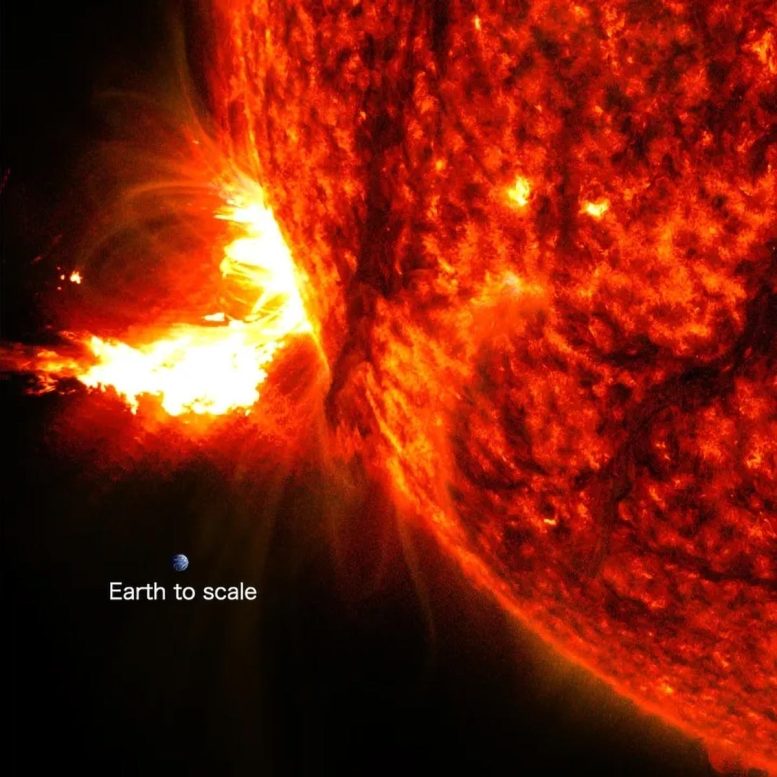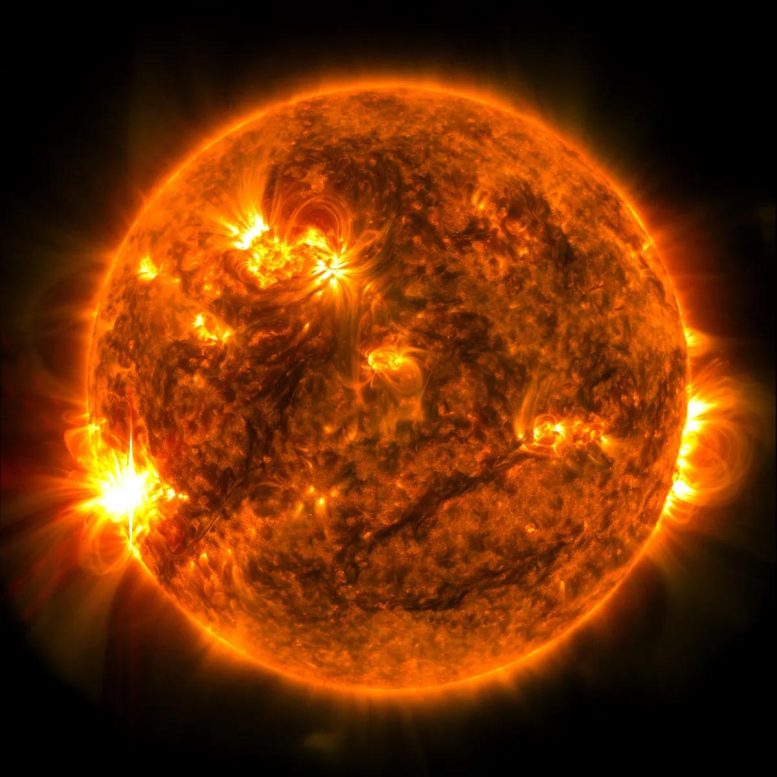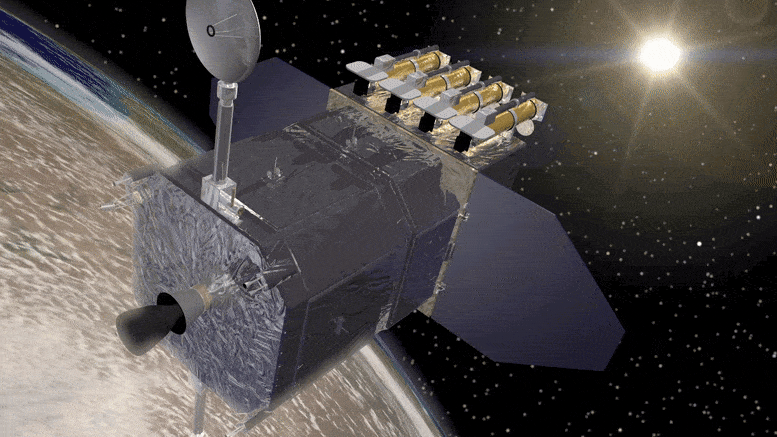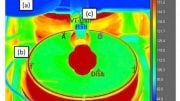
NASA’s Solar Dynamics Observatory captured this image of a solar flare seen as the bright flash on the limb of the Sun on May 27, 2024, with an inset image of Earth for scale. The image shows a subset of extreme ultraviolet light that highlights the extremely hot material in flares and which is colorized in red. Credit: NASA/SDO
NASA’s Solar Dynamics Observatory (SDO), which continuously monitors the Sun, recently captured images of two powerful X-class solar flares. The first flare was classified as an X2.8 and peaked at 3:08 a.m. ET on May 27, 2024. The second, classified as an X1.4, reached its peak at 10:37 a.m. ET on May 29, 2024.
Solar flares are intense bursts of radiation that occur on the Sun when magnetic energy that has built up in the solar atmosphere is suddenly released. They emit energy across the entire electromagnetic spectrum, from radio waves to gamma rays. These flares can last from minutes to hours and are often accompanied by the ejection of solar material known as coronal mass ejections (CMEs).

NASA’s Solar Dynamics Observatory captured this image of a solar flare – as seen in the bright flash on the left – on May 29, 2024. The image shows a subset of extreme ultraviolet light that highlights the extremely hot material in flares and which is colorized in orange. Credit: NASA/SDO
The strength of solar flares is classified based on their brightness in the X-ray wavelengths observed by satellites, such as the GOES spacecraft. These classes are designated as A, B, C, M, or X, with A being the weakest and X the strongest. Each class represents a tenfold increase in energy output, and within each class, a finer scale from 1 to 9 is used to provide more detail. For example:
- A-class flares are the smallest, having little to no effect on Earth.
- B-class flares are a bit larger but still generally insignificant.
- C-class flares are small to medium in size, with few noticeable consequences on Earth.
- M-class flares can cause brief radio blackouts at the poles and minor radiation storms that might endanger astronauts.
- X-class flares are the largest and most powerful flares, capable of causing planet-wide radio blackouts and long-lasting radiation storms.
The classification of a flare, such as X2.8, indicates an X-class flare with a brightness of 2.8 on the logarithmic scale used for measuring X-rays. This scale is key in understanding and predicting the potential impacts of solar flares on the space environment around Earth and the various technologies and systems that can be affected by increased levels of solar radiation.

This animation of the Solar Dynamics Observatory shows it above the earth as it faces toward the Sun. SDO is designed to help us understand the Sun’s influence on Earth and Near-Earth space by studying the solar atmosphere on small scales of space and time and in many wavelengths simultaneously. Credit: NASA/Goddard Space Flight Center Conceptual Image Lab
NASA’s Solar Dynamics Observatory (SDO) is a mission dedicated to understanding the Sun’s influence on Earth and its near-Earth environment. Launched on February 11, 2010, SDO is a part of NASA’s Living With a Star (LWS) program, which aims to study aspects of the connected Sun-Earth system that directly affect life and society.
SDO’s primary goals are to gain insights into the Sun’s atmosphere and its magnetic field, to understand how energy is stored and released in the solar atmosphere (such as in solar flares and coronal mass ejections), and to measure the solar variations that influence life on Earth and its technological systems. By providing nearly continuous, high-resolution observations of the Sun in multiple wavelengths, the observatory plays a crucial role in improving our ability to forecast space weather events.
The observatory is equipped with three highly sensitive instruments:
- The Atmospheric Imaging Assembly (AIA) captures detailed images of the solar atmosphere in multiple wavelengths every 12 seconds, allowing for a comprehensive view of the corona and its dynamics.
- The Helioseismic and Magnetic Imager (HMI) observes the Sun’s surface and magnetic field, providing data that help to understand the Sun’s internal structure and magnetic activity.
- The Extreme Ultraviolet Variability Experiment (EVE) measures the Sun’s ultraviolet output with unprecedented accuracy, which is vital for understanding changes in the Earth’s atmosphere and space environment.
SDO’s data are integral to our understanding of the Sun’s complex and dynamic behavior and have substantially improved space weather forecasting.









Be the first to comment on "Sun Struck: NASA Captures Intense X-Class Solar Flares"